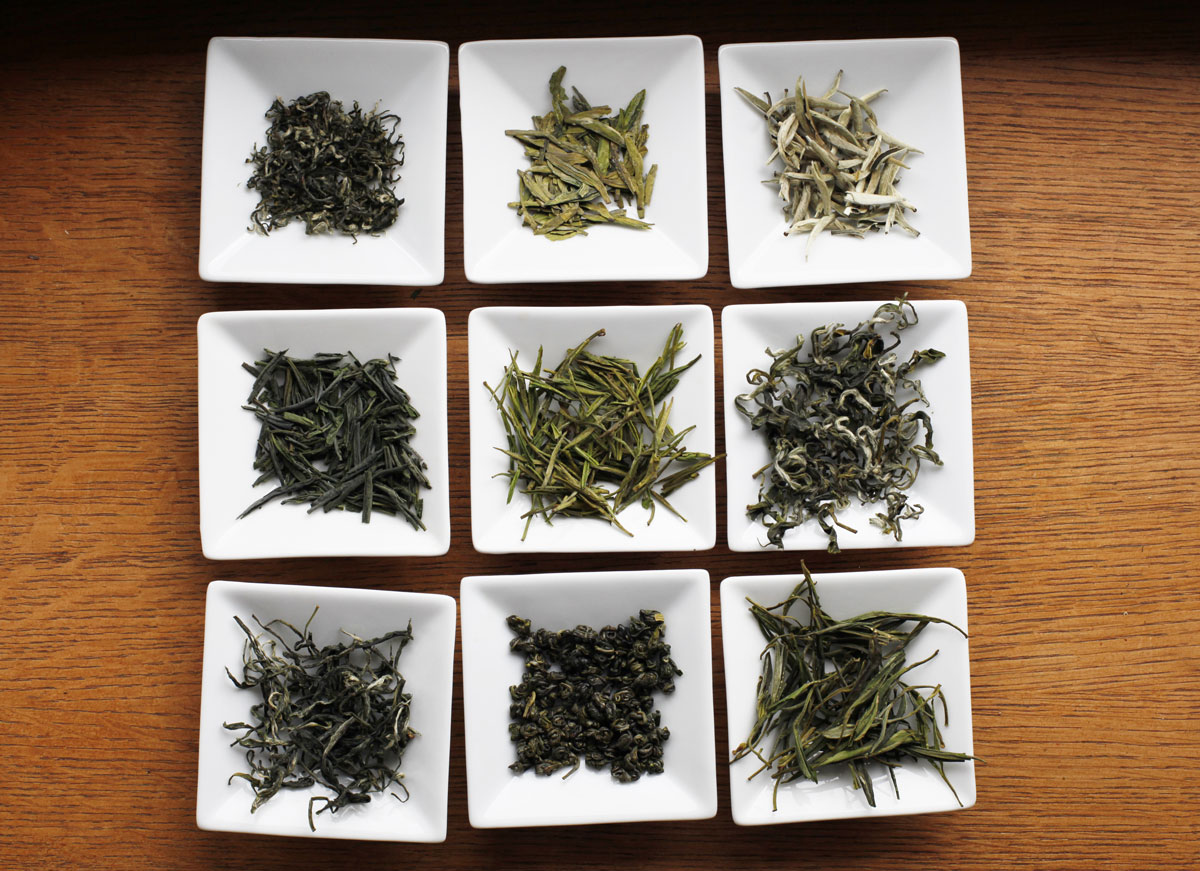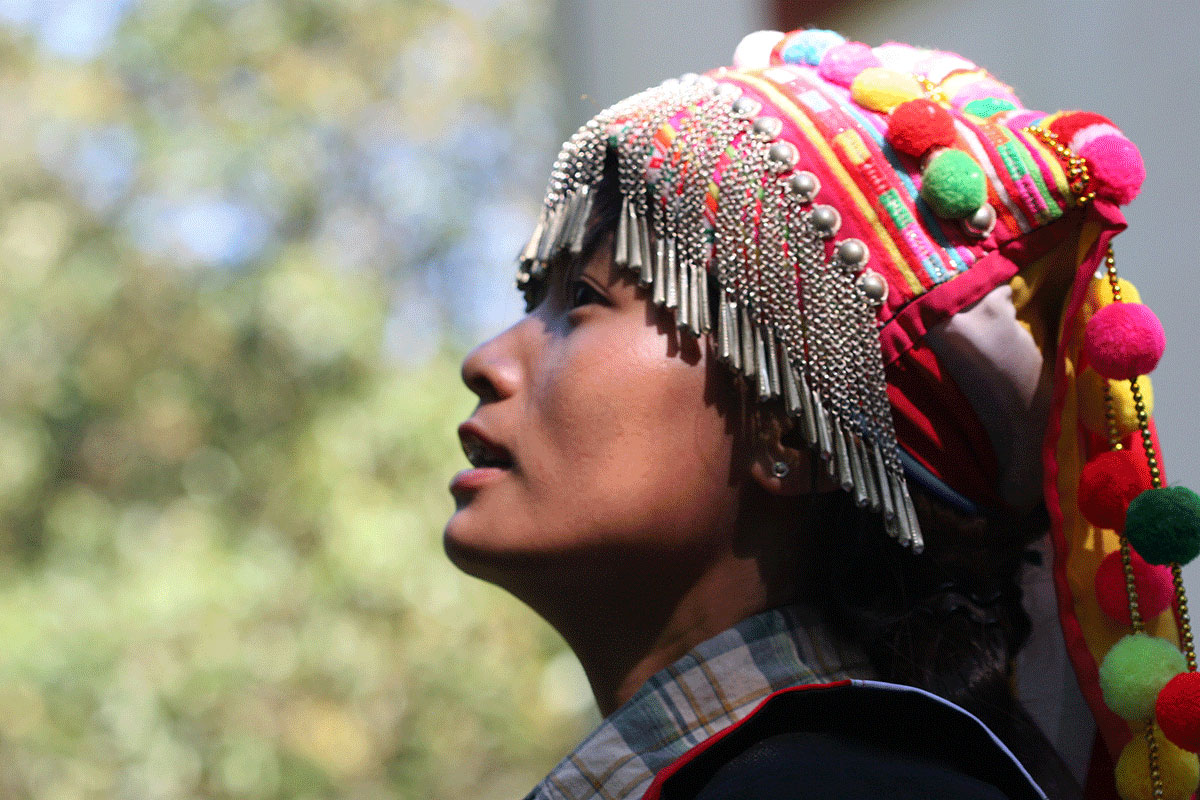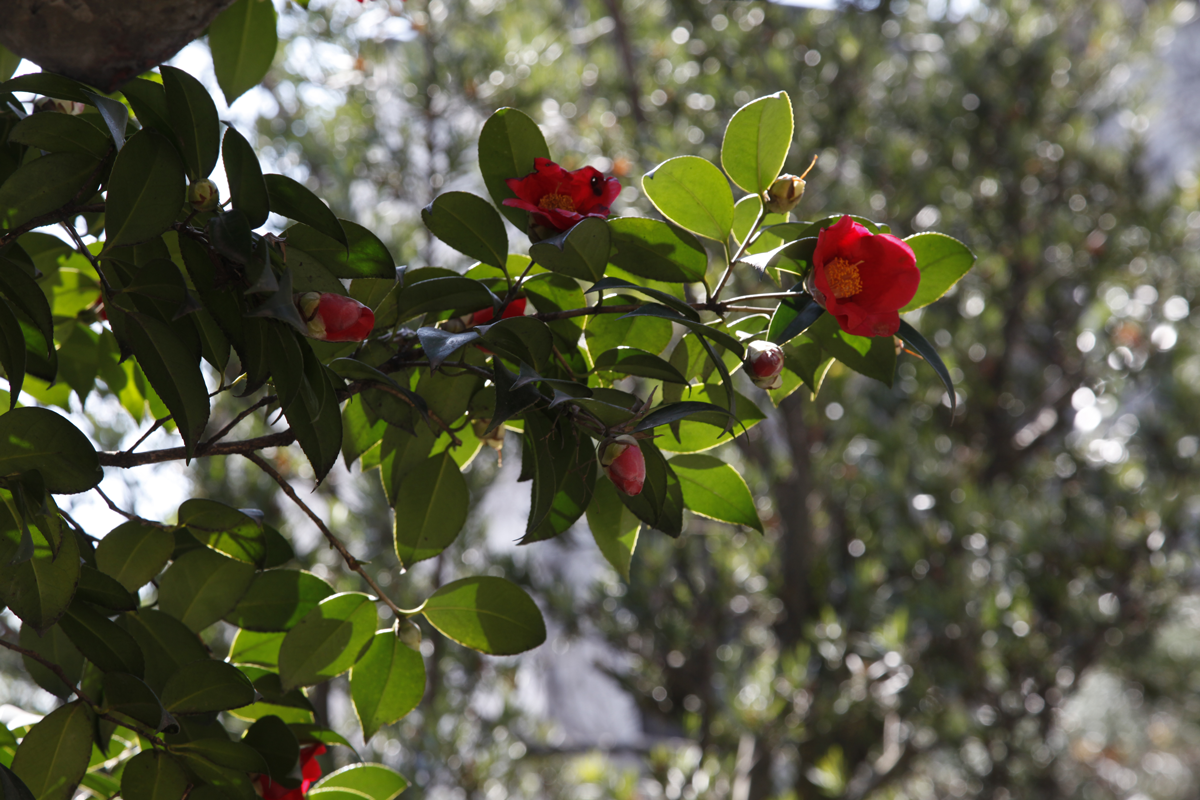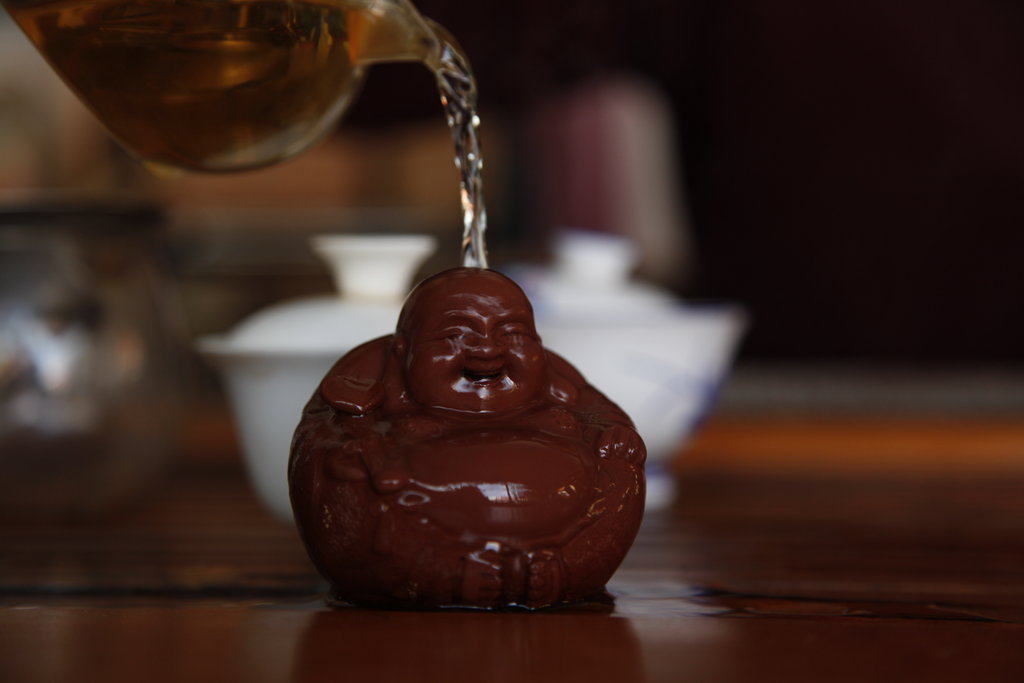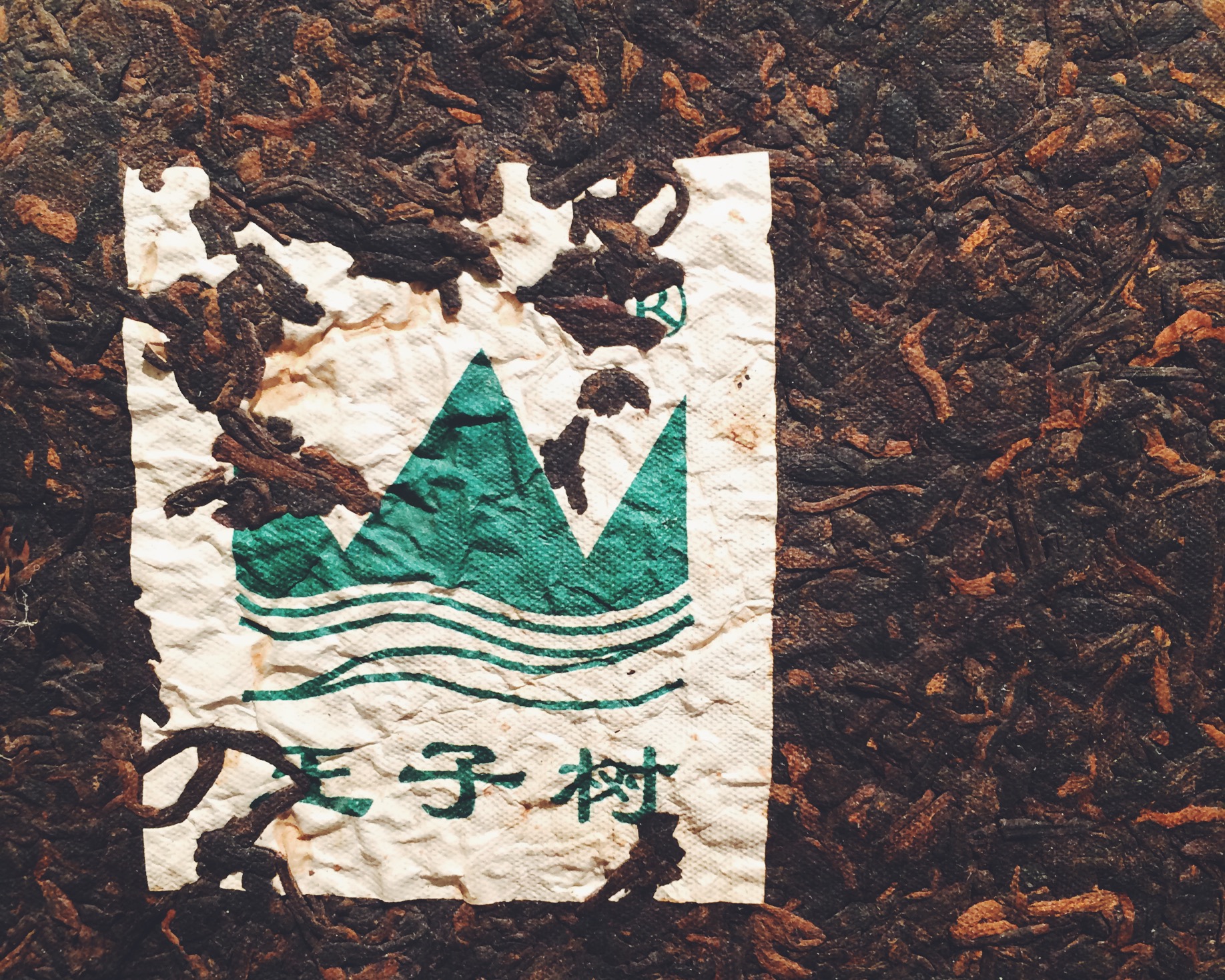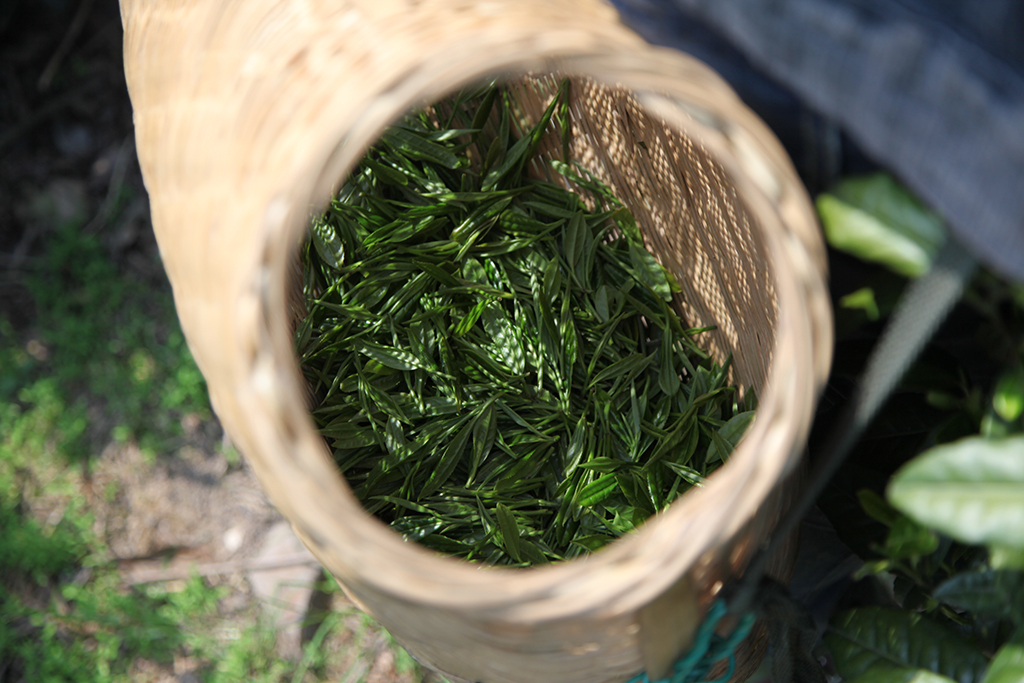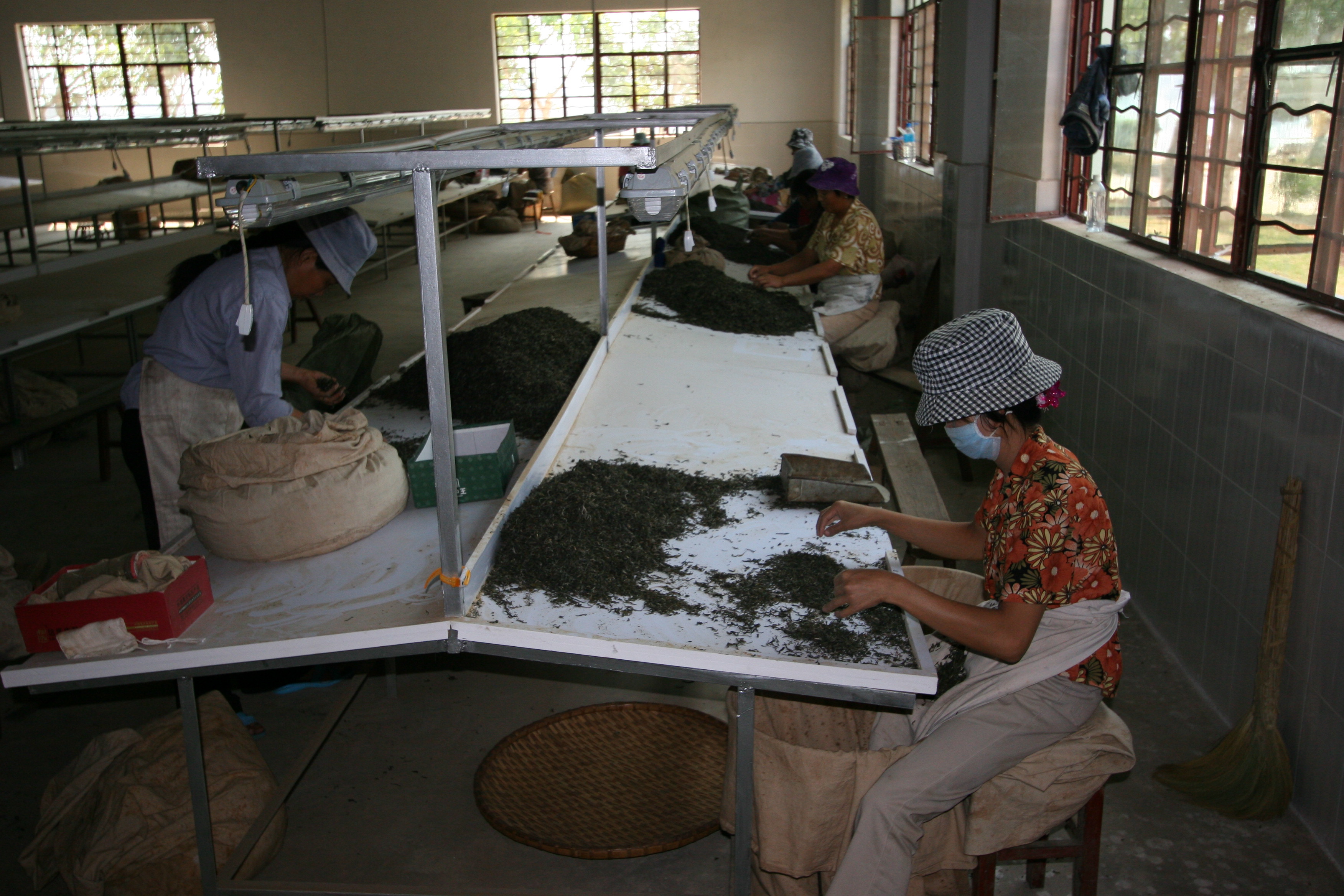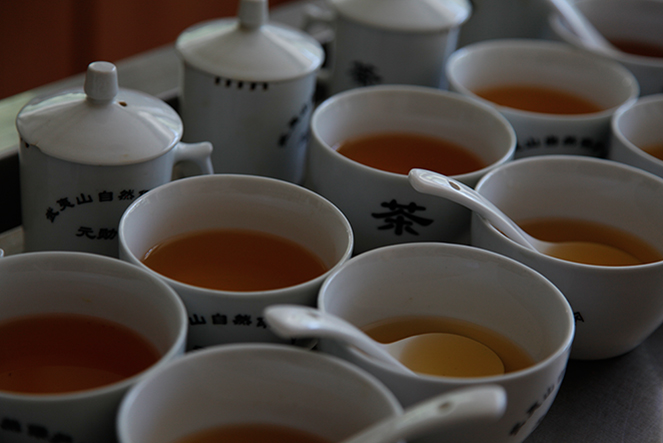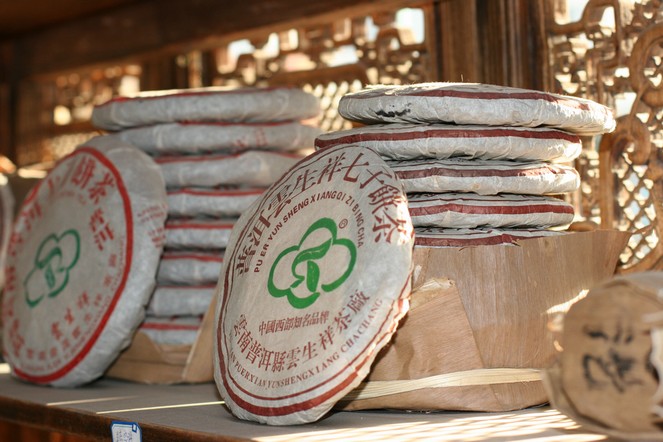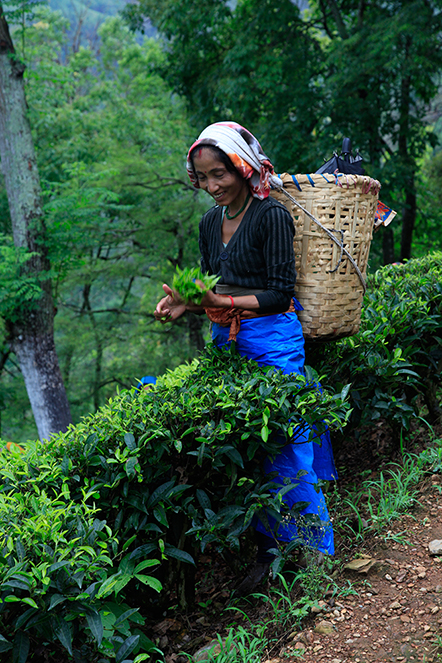Tea has been consumed in China for more than 3,000 years, and it is only in this country that we find such a rich variety. It produces all colours of tea: white, green, blue-green, yellow, black and dark. In China we find a unique culture of terroir: one village might have been following a very specific tradition of tea shaping for centuries, while in the next village the leaves could be processed in a completely different way. Nowhere else in the world do we find such a variety of practices. This photo shows my 2017 selection of “new-season” Chinese green teas, some of which were harvested before the Qingming festival. From left to right: Pre Qing Ming Bi Luo Chun, Pre Qing Ming Long Jing, Pre Qing Ming Bourgeons de Jade, Pre Qing Ming Lu An Gua Pian, Pre Qing Ming Anji Bai Cha, Bai Mao Hou, Mao Feng Premium, Yong Xi Huo Qing, Huang Shan Mao Feng. It goes without saying that just as the size, shape and colour of the leaves differ so much, the tasting experience is equally varied among these premium teas.
China
Ecology: what if we take matters into our own hands?
Ecology is rarely a priority for politicians, but why should we expect them to do everything? Why complain that the environment does not play a big enough role in political debate or manifestos, and wait passively for things to change at the next elections? We expect politicians to do everything. What if we took matters into our own hands? In terms of the environment, our power is not limited to ticking a box on a ballot paper. Our purse, for example, represents a lot of power. If we don’t want a plastic bag, we can refuse one. If we don’t want a whole heap of packaging, we can refuse it. If we don’t want animal cruelty, we can start by eating less meat. Eat it a bit less often, and choose meat from animals that have enjoyed a healthy life, out of doors, raised by good farmers who care for their welfare. Or fish caught by conscientious fisherman, and not by trawlers that scoop up everything in their path and decimate the seas. We can buy fresh, seasonal produce; we can buy local whenever possible. We can buy from the producers themselves rather than from supermarkets. Each one of us has the power to help limit the often disastrous consequences of the food industry, which produces on such a large scale. We can avoid ready meals. We can stop buying pointless chemical products: people criticise farmer’ practices when they cover their own gardens with weed killers and fertilisers. We can recycle, we can reduce our consumption. We can compost, we can grow our own food. We can think as a community. We can help each other, give to others. We can upcycle, we can cycle. We can cook, we can keep animals. We can walk.
There’s a spring tea for everyone
For those who want to try spring – or first-flush – teas, here are some tips. Darjeelings harvested in March and April develop sustained floral notes accompanied by a touch of astringency and bitterness. For a combination of brioche and floral aromas, try Nepalese first-flush teas, which are harvested from the start of April. Those who enjoy chestnut, mineral and vegetal notes would do well with new-season Chinese teas. (The rarest and most sought after, and therefore the most expensive, are those known as pre-Qingming teas, harvested before Chinese Tomb-Sweeping Day which takes place at the beginning of April). Lastly, for fans of iodine, cut grass and steamed vegetable notes, Japanese Ichibanchas are a pure delight. They are harvested between the end of April and the middle of May. Of course I haven’t covered them all here, and there are other countries to discover, but if we are talking about springtime and nature reawakening, and you want teas that evoke gardens and rising sap, these are the ones I think of first.
The “tea pet”, the tea enthusiast’s best friend
Pets are wonderful creatures that can show the greatest humanity at times when our fellow humans may be lacking. We find these friends to be so sensitive and loyal that the description of animal does not do them justice.
In China, all tea connoisseurs and enthusiasts who use the Gong Fu Cha to prepare their brew have one or more “tea pets”. The tea pet is a terracotta figurine placed on the tea boat, over which tea is poured from time to time, to share special moments with it. Over the years the figurine acquires a patina through repeated dousing. The tea pet can be an animal or a human figure, as seen here.
A tea pet, or company being, shares your day-to-day life. Like other pets, it is always in an agreeable mood and is good at listening. You know where to find it. It is always there for you, loyal and happy.
Improving with age
Recently a blogger asked me what my favourite tea was. I couldn’t answer, as is the way every time I’m asked this question. I love so many different teas! How could I choose just one among the most remarkable teas? How could I choose one when they’re all so different? How to choose between a Japanese Ichibancha, for example, a Dan Cong, a Jukro, a Pu Erh Sheng, a Darjeeling AV2, an Oriental Beauty, a Taiping Hou Kui and an Anxi Tie Kuan Yin, to name just a few among my essential favourites? And that’s leaving aside all the other teas that can also be classed among the best in the world! Then there are the less well known ones, which I’m proud to have discovered in regions unknown by connoisseurs, such as Africa, for example.
No, I don’t want to answer that question. I don’t want to choose. Every tea has its moment, its day, time and surroundings. This morning, for example, a cold rainy day in Paris, the day of the American presidential elections, I warmed my body and soul with a Pu Erh Shu, a dark tea with earthy, animal notes; disturbing, powerful notes. A tea that is initially scary; a tea that smells of stables, leather, worm-eaten wood, cellars, moss, undergrowth, humus and decomposing plant material. A tea that nonetheless has a wonderful richness and is special because it improves with age. And that’s what I wish for the new American president: to improve with age.
Very rigorous work
Wherever it comes from, a premium tea involves rigorous work. This starts with the harvest, which must be done meticulously, and of course continues throughout each stage in the processing. Here, in Anhui (China), they are harvesting Huang Shan Mao Feng – “Downy Tips of the Yellow Mountains”. We can see the care being taken with the plucking as well as when transporting the leaves, which are shaded from the sun but still have air circulating through them. The baskets are small to prevent any compression of the precious shoots
Meticulous work and high standards
It takes a lot of manual work to produce a high-quality tea, except in Japan, where they have designed incredibly sophisticated machines.
Tea leaves are sorted one by one, like here, in China. This is done for any tea worthy of the name; in other words, whole-leaf, good quality tea. This leaf-by-leaf sorting eliminates tiny pieces of stem, as well as any coarser leaves. It is also an opportunity to remove the occasional insect: tea plantations are living environments, and the presence of weeds and insects can be a sign of good farming practice.
The three tasting senses
Three senses come into play when we drink tea and analyse the liquor: taste, which focuses on flavours (sweet, salty, acidic, bitter, umami, etc.), smell – made more effective through retro-nasal olfaction (a technique that consists of exhaling through the nose, bringing more olfactory molecules into the retro-nasal cavity) – and touch, which of course tells us whether the tea is hot or cold, astringent or silky, and other sensations. If we want to describe a tea, it is essential to understand about flavours, olfactory notes and touch. It helps us when we taste together, so we can share our impressions.
Pu Erh, a fascinating group of teas
At this time of year, I particularly enjoy drinking Pu Erh after a meal. Firstly, it is said in China that this tea “dissolves fats” and helps prevent cholesterol. Secondly, I like its aroma of wet earth, rotting wood and damp straw; its smell of cowsheds, mushrooms and oak moss; its aroma of cellars, dry wood, liquorice, manes, wax and flint; its vegetal, fruity smell.
From one Pu Erh to another, the variety of olfactory notes is wide, another reason to try this fascinating group of teas, the only ones that undergo real fermentation. It is available loose-leaf or in a “cake”. It can be “raw” or “cooked”, depending on whether fermentation is done in the traditional manner or accelerated. It can also improve with age, like good wines.
Superb 2015 new-season teas
Calling all fans of “grand cru” teas! You now have access to the best selection of teas in the world. This is the optimum time of year to try the finest teas in existence. All are extremely fresh, newly delivered by air. There are first-flush and second-flush Darjeelings, new-season Chinese teas, and Japanese Ichibanchas harvested in May, alongside teas from Nepal, Taiwan and South Korea.
For tea-lovers, the start of the summer is a pure pleasure!

